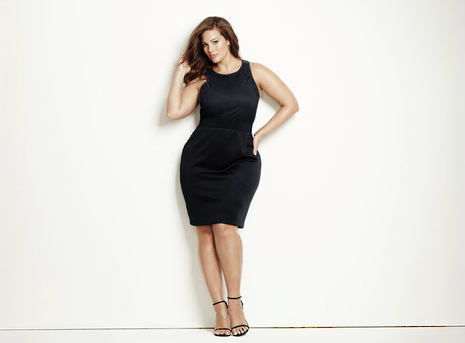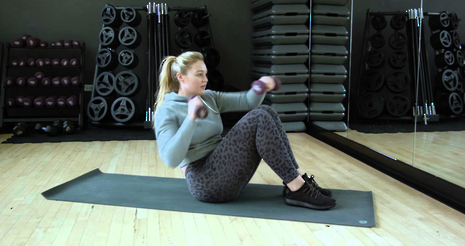The changing shape of beauty
We’re all told that size doesn’t matter, but can 2017 prove it? Ellie Mullett finds out

Vogue is more likely to be associated with the exclusive world of haute couture than it is with promoting diversity, but they have boldly proclaimed that 2017 will be the year of Beauty Beyond Size. Their January 2017 cover girl is American plus-size model Ashley Graham (who is also a nominee for Female Model of the year in the Varsity Fashion Awards 2016), and with readership of over one million fashion-conscious individuals a month, if they can keep up this promise for the year ahead, then there is real potential for changing how ‘real women’ are portrayed in the fashion industry.
The high street has happily acknowledged plus-size customers, and has done so for a long time. River Island, New Look and ASOS all have ranges for those who are UK size 18-26, featuring on-trend pieces, not the shapeless black garments which are all the designer brands seem to appropriate for curvy girls, should they stock anything over a UK size 14 at all (Prada, Burberry and Ralph Lauren don’t, to name a few). Ashley is a UK size 16, just like the average British woman, yet even though she is a highly successful model, high-end designers were apparently unenthusiastic about dressing her when they were contacted about her shoot as a consequence of her fuller figure. Vogue’s efforts to show that fashion is for ‘real’ people – not just willowy models with a noticeable lack of curves – will be disappointingly futile if the labels which they rely upon can’t replace the snobby ‘size matters’ attitude with a willingness to liberate high fashion from its select clique of impossibly slender clotheshorses.
However, drawing attention to what might make a model ‘different’ can do more to segregate rather than diversify. Ashley Graham is Vogue’s first plus-size cover girl, but she’s also just the latest in a long line of beautiful, influential individuals to have filled the same role, and thankfully they have respected this by simply describing her as ‘the model with attitude’ on their cover. She is just a ‘model’, not a ‘plus-size’ one, and this will resonate perfectly in her campaign for body confidence.
“Vogue’s efforts to show that fashion is for ‘real’ people...will be disappointingly futile if the labels which they rely upon can’t replace the snobby ‘size matters’ attitude”
The Women’s Equality Party, led by Sophie Walker, are campaigning to make sure the British Fashion Council ensures designers displaying in London should have at least one of their sample pieces (which are sent out for shoots in magazines) in a size larger than a UK 12. This is not only a good idea for body confidence, but also for the garments’ saleability, given that curves suit pieces which UK size 6 doesn’t (and vice versa). If this movement is successful, it will hopefully prompt designers to think carefully about widening their range of targeted consumers, and about designing clothes that are both flattering and fashionable for a spectrum of body shapes. It will also be a snub to the likes of Donatella Versace, who apparently once rejected the idea that her collection be showcased on ‘real’ women.

‘Plus-size’ should not be synonymous with negativity, or body shaming. But, it would be irresponsible to ignore that taking ‘plus-size’ too far can lead to very real health consequences, just as taking ‘nothing tastes as good as skinny feels’ too far does too. Just as Ashley, and the ever-growing cohort of plus-size models following her lead, ooze body confidence, it should be noted that they also respect their well-being and lead healthy lifestyles too.
If Vogue can turn their proclamation into reality, it will be one huge leap for the fashion industry. But alone, they can only make a fraction of the difference that they would be able to make if high-end designers dropped the pretence of exclusivity and noticed that not everyone with the money to buy their clothes wears a size 8. Let’s hope 2017 is a step towards fashion for all, not the few
 News / Fitz students face ‘massive invasion of privacy’ over messy rooms23 April 2024
News / Fitz students face ‘massive invasion of privacy’ over messy rooms23 April 2024 News / Cambridge University disables comments following Passover post backlash 24 April 2024
News / Cambridge University disables comments following Passover post backlash 24 April 2024 Comment / Gown vs town? Local investment plans must remember Cambridge is not just a university24 April 2024
Comment / Gown vs town? Local investment plans must remember Cambridge is not just a university24 April 2024 Comment / Does Lucy Cavendish need a billionaire bailout?22 April 2024
Comment / Does Lucy Cavendish need a billionaire bailout?22 April 2024 Interviews / Gender Agenda on building feminist solidarity in Cambridge24 April 2024
Interviews / Gender Agenda on building feminist solidarity in Cambridge24 April 2024





